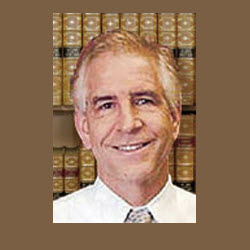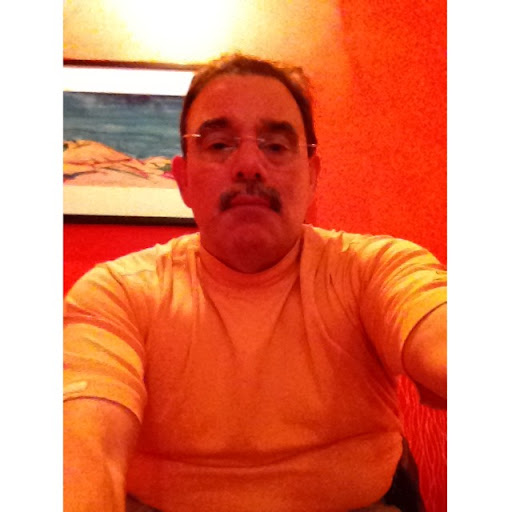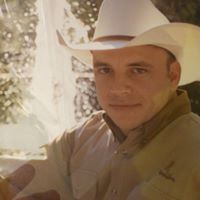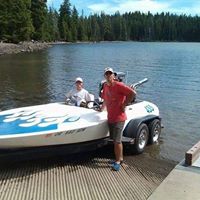Jeffrey L Herman
age ~62
from Escondido, CA
- Also known as:
-
- Jeffrey Lee Herman
- Jeff L Herman
- Jeffery L Herman
- Jack L Herman
- Jeffrey L Pastell
- Phone and address:
-
485 N Citrus Ave APT 7, Escondido, CA 92027
(858)4053163
Jeffrey Herman Phones & Addresses
- 485 N Citrus Ave APT 7, Escondido, CA 92027 • (858)4053163
- 589 Shadywood Dr, Escondido, CA 92026 • (760)4328581
- 653 Jacks Creek Rd, Escondido, CA 92027 • (760)9606506
- 10620 Dabney Dr #173, San Diego, CA 92126 • (858)9670942
- 3455 Lebon Dr #1518, San Diego, CA 92122 • (619)4536610
- Goleta, CA
Lawyers & Attorneys

Jeffrey David Herman - Lawyer
view sourceLicenses:
New Jersey - Active 1987

Jeffrey R. Herman, La Jolla CA - Lawyer
view sourceAddress:
Jeffrey R. Herman, Esq.
4275 Executive Sq Ste 200, La Jolla, CA 92037
(858)9645112 (Office)
4275 Executive Sq Ste 200, La Jolla, CA 92037
(858)9645112 (Office)
Licenses:
California - Active 2013
Education:
Concord Law School
Queens Coll
Queens Coll
Specialties:
Intellectual Property - 50%
Unknown - 50%
Unknown - 50%

Jeffrey Scott Herman, San Diego CA - Lawyer
view sourceAddress:
11975 El Camino Real Ste 200, San Diego, CA 92130
(858)4504050 (Office)
(858)4504050 (Office)
Licenses:
California - Active 2011
Education:
California Western School of Law
Graduated - 2011
University of Michigan
Degree - Bachelor of Arts
Graduated - 2008
Graduated - 2011
University of Michigan
Degree - Bachelor of Arts
Graduated - 2008
Specialties:
Family - 100%

Jeffrey Herman - Lawyer
view sourceOffice:
Schulte Roth & Zabel LLP
Specialties:
Trusts and Estates
Education
Securities / Investment Fraud
Energy / Utilities
Education
Securities / Investment Fraud
Energy / Utilities
ISLN:
919739794
Admitted:
2008
University:
Columbia College, B.A., 2004
Law School:
Columbia University Law School, J.D., 2007

Jeffrey Herman - Lawyer
view sourceOffice:
Desert Disability PLC
Specialties:
Social Security Disability
Appealing Claim Denials
Social Security Disability Filing
Hearing Representation
Intellectual Property Licensing
Trademarks
Appealing Claim Denials
Social Security Disability Filing
Hearing Representation
Intellectual Property Licensing
Trademarks
ISLN:
922445034
Admitted:
2013
University:
Queens College, B.A., 2003
Law School:
Concord Law School, J.D., 2012
Us Patents
-
Extensible Information System
view source -
US Patent:20020184401, Dec 5, 2002
-
Filed:Oct 22, 2001
-
Appl. No.:10/039306
-
Inventors:Richard Kadel - San Diego CA, US
Jeffrey Herman - San Diego CA, US
Christopher Exline - San Diego CA, US
David Almilli - La Mesa CA, US
Christopher Priebe - San Diego CA, US -
International Classification:G06F009/44
-
US Classification:709/315000
-
Abstract:A framework enables data source components to be developed independently of data consumer components. A mediation layer, typically implemented as a group of APIs (application programming interface), handles and defines the mediation and interface between the source and data components. The framework, called XIS (extensible information system), is especially suited for development of information-handling systems and applications. Data source components and data consumer components are typically designed to communicate with each other via several interfaces. Domain, relationship, attribute/metadata, and change event interfaces are defined within the mediation layer. Other interfaces may also be defined. Data source components that are written for non-XIS aware environments or frameworks may still be used with XIS by “wrapping” such source components with code to conform to the interface requirements. Java objects are examples of data source components. Data consumer components thus are able to use or consume various source components regardless of the data types and the data source. Thus, once a data consumer component is developed within the XIS framework, any data source components within the XIS framework may be consumed by a data consumer component.
-
Matrix-Controlled Printhead For An Electrochemical Additive Manufacturing System
view source -
US Patent:20220349046, Nov 3, 2022
-
Filed:Jul 12, 2022
-
Appl. No.:17/863272
-
Inventors:- San Diego CA, US
Andrew Edmonds - Oceanside CA, US
Jeffrey Herman - Solana Beach CA, US
Charles Pateros - Carlsbad CA, US
Kareemullah Shaik - San Diego CA, US
Edward White - San Diego CA, US -
International Classification:C23C 16/04
B33Y 30/00
C25D 17/00
C23C 14/04
C23C 14/14
C23C 14/08
C25D 5/10
C23C 16/27 -
Abstract:Process for manufacturing a printhead for a 3D manufacturing system that uses metal electrodeposition to construct parts. The printhead may be constructed by depositing layers on top of a backplane that contains control and power circuits. Deposited layers may include insulating layers and an anode layer that contain deposition anodes that are in contact with the electrolyte to drive electrodeposition. Insulating layers may for example be constructed of silicon nitride or silicon dioxide; the anode layer may contain an insoluble conductive material such as platinum group metals and their associated oxides, highly doped semiconducting materials, and carbon based conductors. The anode layer may be deposited using chemical vapor deposition or physical vapor deposition. Alternatively in one or more embodiments the printhead may be constructed by manufacturing a separate anode plane component, and then bonding the anode plane to the backplane.
-
Methods And Systems For Electrochemical Additive Manufacturing While Modifying Electrolyte Solutions
view source -
US Patent:20230089135, Mar 23, 2023
-
Filed:Aug 30, 2022
-
Appl. No.:17/823227
-
Inventors:- San Diego CA, US
Jeffrey Herman - San Diego CA, US
Kareemullah Shaik - San Diego CA, US
Andrew Edmonds - San Diego CA, US -
Assignee:Fabric8Labs, Inc. - San Diego CA
-
International Classification:C25D 1/00
B33Y 10/00
B33Y 30/00 -
Abstract:Described herein are electrochemical additive manufacturing systems and methods of using such systems. In some examples, a method comprises flowing an electrolyte solution into the gap formed by an electrode array and a deposition electrode and depositing (electroplating) a target material onto the deposition electrode. The method also comprises changing one or more characteristics of the electrolyte solution within the system, e.g., to remove deposition byproducts, replenish consumed components, and/or change the solution composition to modify various properties of the deposited target material (e.g., composition, morphology) without major changeovers within the system. These electrolyte changes can be performed dynamically while the system continues to operate. The changed characteristics can be acid concentration, feedstock ion concentration, additive concentration, temperature, and flow rate. In some examples, the solution is flowed into the gap from a supply reservoir and recirculated back into the supply reservoir after exiting the gap.
-
Matrix-Controlled Printhead For An Electrochemical Additive Manufacturing System
view source -
US Patent:20230079959, Mar 16, 2023
-
Filed:Nov 23, 2022
-
Appl. No.:17/993277
-
Inventors:- San Diego CA, US
Andrew Edmonds - Oceanside CA, US
Jeffrey Herman - Solana Beach CA, US
Charles Pateros - Carlsbad CA, US
David Wirth - San Diego CA, US
Kareemullah Shaik - San Diego CA, US -
International Classification:C25D 1/00
B33Y 50/02
B33Y 30/00
B33Y 10/00 -
Abstract:Printhead for a 3D manufacturing system that uses metal electrodeposition to construct parts; embodiments utilize a grid of anodes to achieve high quality parts with features that may be small and detailed. To support grids with thousands or millions of anodes, the printhead may use matrix control with row and column drivers similar to display backplanes. Unlike display backplanes where the design goal is to display images using minimal current, the printhead may be optimized for high current density for fast electrodeposition, and for anode longevity. Current density may exceed 1000 mA per cm-squared, at least an order of magnitude greater than that of display backplanes. Anode longevity may be enhanced by using relatively large anodes compared to the grid pitch of the printhead, by lengthening the conductive paths through anodes, or both. Embodiments may be constructed by adding anode and insulation layers on top of matrix-controlled switching circuits.
-
Systems And Methods For Electrochemical Additive Manufacturing Of Parts Using Multi-Purpose Build Plate
view source -
US Patent:20230070048, Mar 9, 2023
-
Filed:Sep 6, 2022
-
Appl. No.:17/903966
-
Inventors:- San Diego CA, US
Ian Winfield - Oceanside CA, US
Andrew Edmonds - Oceanside CA, US
Kareem Shaik - San Diego CA, US
Jeffrey Herman - Solana Beach CA, US
Michael Matthews - Encinitas CA, US
Charles Pateros - Carlsbad CA, US -
International Classification:C25D 1/00
C25D 5/10
C25D 21/12
C25D 17/12
C25D 5/00 -
Abstract:An electrochemical additive manufacturing method includes positioning a build plate into an electrolyte solution. The conductive layer comprises at least one conductive-layer segment forming a pattern corresponding with a component. The method further comprises connecting the at least one conductive-layer segment and one or more deposition anodes to a power source. The one or more deposition anodes correspond with at least a portion of the pattern formed by the at least one conductive-layer segment. The method additionally comprises transmitting electrical energy from the power source through the one or more deposition anodes of the plurality of deposition anodes corresponding with the at least the portion of the pattern formed by the at least one conductive-layer segment, through the electrolyte solution, and to the at least one conductive-layer segment, such that material is deposited onto the at least one conductive-layer segment and forms at least a portion of the component.
-
Electrochemical Additive Manufacturing Method Using Deposition Feedback Control
view source -
US Patent:20230059846, Feb 23, 2023
-
Filed:Nov 7, 2022
-
Appl. No.:17/982338
-
Inventors:- San Diego CA, US
Andrew Edmonds - Oceanside CA, US
Jeffrey Herman - Solana Beach CA, US
Charles Pateros - Carlsbad CA, US
Kareemullah Shaik - San Diego CA, US -
International Classification:H01L 21/48
C25D 1/00
C25D 5/10
C25D 5/22 -
Abstract:A system and method of using electrochemical additive manufacturing to add interconnection features, such as wafer bumps or pillars, or similar structures like heatsinks, to a plate such as a silicon wafer. The plate may be coupled to a cathode, and material for the features may be deposited onto the plate by transmitting current from an anode array through an electrolyte to the cathode. Position actuators and sensors may control the position and orientation of the plate and the anode array to place features in precise positions. Use of electrochemical additive manufacturing may enable construction of features that cannot be created using current photoresist-based methods. For example, pillars may be taller and more closely spaced, with heights of 200 μm or more, diameters of 10 μm or below, and inter-pillar spacing below 20 μm. Features may also extend horizontally instead of only vertically, enabling routing of interconnections to desired locations.
-
3D Metal Printhead Assembly Method Of Manufacture
view source -
US Patent:20210102286, Apr 8, 2021
-
Filed:Nov 16, 2020
-
Appl. No.:17/099602
-
Inventors:- San Diego CA, US
Andrew EDMONDS - Oceanside CA, US
Jeffrey HERMAN - Solana Beach CA, US
Charles PATEROS - Carlsbad CA, US
Kareemullah SHAIK - San Diego CA, US
Edward WHITE - San Diego CA, US -
Assignee:FABRIC8LABS, INC. - San Diego CA
-
International Classification:C23C 16/04
C23C 14/04
C23C 16/27
C25D 17/00
C25D 5/10
B33Y 30/00
C23C 14/08
C23C 14/14 -
Abstract:3D metal printhead assembly method of manufacture that uses metal electrodeposition to construct parts. The printhead may be constructed by depositing layers on top of a backplane that contains control and power circuits. Deposited layers may include insulating layers and an anode layer that contain deposition anodes that are in contact with the electrolyte to drive electrodeposition. Insulating layers may for example be constructed of silicon nitride or silicon dioxide; the anode layer may contain an insoluble conductive material such as platinum group metals and their associated oxides, highly doped semiconducting materials, and carbon based conductors. The anode layer may be deposited using chemical vapor deposition or physical vapor deposition. Alternatively in one or more embodiments the printhead may be constructed by manufacturing a separate anode plane component, and then bonding the anode plane to the backplane.
-
Electrochemical Additive Manufacturing Of Interconnection Features
view source -
US Patent:20210090901, Mar 25, 2021
-
Filed:Dec 4, 2020
-
Appl. No.:17/112909
-
Inventors:- San Diego CA, US
Andrew EDMONDS - Oceanside CA, US
Jeffrey HERMAN - Solana Beach CA, US
Charles PATEROS - Carlsbad CA, US
Kareemullah SHAIK - San Diego CA, US -
Assignee:FABRIC8LABS, INC. - San Diego CA
-
International Classification:H01L 21/48
C25D 1/00
C25D 5/22
C25D 5/10 -
Abstract:A system and method of using electrochemical additive manufacturing to add interconnection features, such as wafer bumps or pillars, or similar structures like heatsinks, to a plate such as a silicon wafer. The plate may be coupled to a cathode, and material for the features may be deposited onto the plate by transmitting current from an anode array through an electrolyte to the cathode. Position actuators and sensors may control the position and orientation of the plate and the anode array to place features in precise positions. Use of electrochemical additive manufacturing may enable construction of features that cannot be created using current photoresist-based methods. For example, pillars may be taller and more closely spaced, with heights of 200 μm or more, diameters of 10 μm or below, and inter-pillar spacing below 20 μm. Features may also extend horizontally instead of only vertically, enabling routing of interconnections to desired locations.
Name / Title
Company / Classification
Phones & Addresses
A & H BUILDERS, LLC
CUSTOM WINDOW ACCENTS LTD
ART TRAUSCH FAMILY FARM, LLC
Medicine Doctors

Jeffrey R. Herman
view sourceSpecialties:
Emergency Medicine, Urgent Care Medicine
Work:
Medcare Urgent Care
8720 Dorchester Rd, North Charleston, SC 29420
(843)5523629 (phone), (843)5765244 (fax)
8720 Dorchester Rd, North Charleston, SC 29420
(843)5523629 (phone), (843)5765244 (fax)
Education:
Medical School
New York Medical College
Graduated: 1992
New York Medical College
Graduated: 1992
Procedures:
Vaccine Administration
Conditions:
Acute Bronchitis
Acute Conjunctivitis
Acute Pharyngitis
Acute Sinusitis
Acute Upper Respiratory Tract Infections
Acute Conjunctivitis
Acute Pharyngitis
Acute Sinusitis
Acute Upper Respiratory Tract Infections
Languages:
Arabic
English
Spanish
English
Spanish
Description:
Dr. Herman graduated from the New York Medical College in 1992. He works in North Charleston, SC and specializes in Emergency Medicine and Urgent Care Medicine.

Jeffrey P. Herman
view sourceSpecialties:
Pediatrics, Adolescent Medicine
Work:
Pediatric & Adolescent Associates Of Central New Jersey LLC
100 Perrine Rd STE 100, Old Bridge, NJ 08857
(732)3160900 (phone), (732)3160499 (fax)
100 Perrine Rd STE 100, Old Bridge, NJ 08857
(732)3160900 (phone), (732)3160499 (fax)
Education:
Medical School
University of Buffalo, SUNY School of Medicine and Biomedical Sciences
Graduated: 1973
University of Buffalo, SUNY School of Medicine and Biomedical Sciences
Graduated: 1973
Procedures:
Destruction of Benign/Premalignant Skin Lesions
Hearing Evaluation
Psychological and Neuropsychological Tests
Vaccine Administration
Hearing Evaluation
Psychological and Neuropsychological Tests
Vaccine Administration
Conditions:
Acute Conjunctivitis
Acute Pharyngitis
Acute Sinusitis
Anxiety Phobic Disorders
Bacterial Pneumonia
Acute Pharyngitis
Acute Sinusitis
Anxiety Phobic Disorders
Bacterial Pneumonia
Languages:
English
Spanish
Spanish
Description:
Dr. Herman graduated from the University of Buffalo, SUNY School of Medicine and Biomedical Sciences in 1973. He works in Old Bridge, NJ and specializes in Pediatrics and Adolescent Medicine. Dr. Herman is affiliated with Robert Wood Johnson University Hospital Hamilton and Saint Peters University Hospital.

Jeffrey S. Herman
view sourceSpecialties:
Internal Medicine
Work:
Saint John Providence Physician NetworkOakland Internal Medicine Associates
30055 Northwestern Hwy STE 260, Farmington, MI 48334
(248)8653720 (phone), (248)8653721 (fax)
Saint John Providence Physician NetworkProvidence Oakland Internal Medicine Associates
1435 N Milford Rd STE 101, Milford, MI 48381
(248)6859780 (phone), (248)6842251 (fax)
30055 Northwestern Hwy STE 260, Farmington, MI 48334
(248)8653720 (phone), (248)8653721 (fax)
Saint John Providence Physician NetworkProvidence Oakland Internal Medicine Associates
1435 N Milford Rd STE 101, Milford, MI 48381
(248)6859780 (phone), (248)6842251 (fax)
Education:
Medical School
Des Moines University College of Osteopathic Medicine
Graduated: 1986
Des Moines University College of Osteopathic Medicine
Graduated: 1986
Procedures:
Vaccine Administration
Arthrocentesis
Continuous EKG
Destruction of Benign/Premalignant Skin Lesions
Electrocardiogram (EKG or ECG)
Pulmonary Function Tests
Skin Tags Removal
Wound Care
Arthrocentesis
Continuous EKG
Destruction of Benign/Premalignant Skin Lesions
Electrocardiogram (EKG or ECG)
Pulmonary Function Tests
Skin Tags Removal
Wound Care
Conditions:
Abdominal Hernia
Acute Myocardial Infarction (AMI)
Acute Pancreatitis
Acute Renal Failure
Atherosclerosis
Acute Myocardial Infarction (AMI)
Acute Pancreatitis
Acute Renal Failure
Atherosclerosis
Languages:
English
Description:
Dr. Herman graduated from the Des Moines University College of Osteopathic Medicine in 1986. He works in Farmington Hills, MI and 1 other location and specializes in Internal Medicine. Dr. Herman is affiliated with Huron Valley-Sinai Hospital, Providence Hospital and Providence Park Hospital.

Jeffrey A. Herman
view sourceSpecialties:
Psychiatry
Work:
Jeffrey A Herman DO
506 Lakeside Park, Southampton, PA 18966
(215)3641400 (phone), (215)3574495 (fax)
506 Lakeside Park, Southampton, PA 18966
(215)3641400 (phone), (215)3574495 (fax)
Education:
Medical School
Philadelphia College of Osteopathic Medicine
Graduated: 1986
Philadelphia College of Osteopathic Medicine
Graduated: 1986
Conditions:
Anxiety Dissociative and Somatoform Disorders
Anxiety Phobic Disorders
Attention Deficit Disorder (ADD)
Bipolar Disorder
Depressive Disorders
Anxiety Phobic Disorders
Attention Deficit Disorder (ADD)
Bipolar Disorder
Depressive Disorders
Languages:
English
Description:
Dr. Herman graduated from the Philadelphia College of Osteopathic Medicine in 1986. He works in Southampton, PA and specializes in Psychiatry.

Jeffrey S. Herman
view sourceSpecialties:
Radiation Oncology
Work:
Minneapolis Radiation Oncology PAUnity Radiation Therapy Center
550 Osborne Rd NE, Minneapolis, MN 55432
(763)7841182 (phone), (763)7841637 (fax)
550 Osborne Rd NE, Minneapolis, MN 55432
(763)7841182 (phone), (763)7841637 (fax)
Education:
Medical School
Saint Louis University School of Medicine
Graduated: 1983
Saint Louis University School of Medicine
Graduated: 1983
Conditions:
Malignant Neoplasm of Female Breast
Melanoma
Skin Cancer
Thyroid Cancer
Melanoma
Skin Cancer
Thyroid Cancer
Languages:
English
Description:
Dr. Herman graduated from the Saint Louis University School of Medicine in 1983. He works in Fridley, MN and specializes in Radiation Oncology.

Jeffrey F. Herman
view sourceSpecialties:
Diagnostic Radiology, Radiology
Work:
Center For Womens Health
2600 Mccandless Dr, Midland, MI 48640
(989)8379060 (phone), (989)8379065 (fax)
Midland Radiology Associates
4005 Orch Dr, Midland, MI 48670
(989)8393408 (phone)
2600 Mccandless Dr, Midland, MI 48640
(989)8379060 (phone), (989)8379065 (fax)
Midland Radiology Associates
4005 Orch Dr, Midland, MI 48670
(989)8393408 (phone)
Education:
Medical School
Wayne State University School of Medicine
Graduated: 1982
Wayne State University School of Medicine
Graduated: 1982
Languages:
English
Description:
Dr. Herman graduated from the Wayne State University School of Medicine in 1982. He works in Midland, MI and 1 other location and specializes in Diagnostic Radiology and Radiology. Dr. Herman is affiliated with Midmichigan Medical Center and Midmichigan Medical Center Gladwin.

Jeffrey B. Herman
view sourceSpecialties:
Diagnostic Radiology
Work:
Diagnostic Imaging CentersDiagnostic Imaging Centers PA
5400 N Oak Trfy STE 206, Kansas City, MO 64118
(816)4555959 (phone), (816)4553728 (fax)
Diagnostic Imaging Centers
5520 College Blvd STE 100, Leawood, KS 66211
(913)4919299 (phone), (913)4919363 (fax)
Diagnostic Imaging Centers
13795 S Mur Len Rd STE 105, Olathe, KS 66062
(913)3977272 (phone), (816)4449957 (fax)
5400 N Oak Trfy STE 206, Kansas City, MO 64118
(816)4555959 (phone), (816)4553728 (fax)
Diagnostic Imaging Centers
5520 College Blvd STE 100, Leawood, KS 66211
(913)4919299 (phone), (913)4919363 (fax)
Diagnostic Imaging Centers
13795 S Mur Len Rd STE 105, Olathe, KS 66062
(913)3977272 (phone), (816)4449957 (fax)
Education:
Medical School
University of Pennsylvania School of Medicine
Graduated: 1995
University of Pennsylvania School of Medicine
Graduated: 1995
Languages:
English
Description:
Dr. Herman graduated from the University of Pennsylvania School of Medicine in 1995. He works in Leawood, KS and 2 other locations and specializes in Diagnostic Radiology.

Jeffrey Herman
view sourceSpecialties:
Emergency Medicine
Internal Medicine
Internal Medicine
Education:
New York Medical College (1988)
Resumes

Attorney, Patent Consultant, Website Developer & Entrepreneur
view sourcePosition:
Patent Consultant at RG Patent Consulting LLC (Sole Proprietorship), CEO at CheapWebGuy
Location:
Phoenix, Arizona
Industry:
Legal Services
Work:
RG Patent Consulting LLC - Phoenix, Arizona Area since Jan 2010
Patent Consultant
CheapWebGuy since Jan 2007
CEO
CheapWebGuy - Phoenix, Arizona Area Jan 2002 - Jul 2012
Website Developer
Law Offices of Herman & Bernardo Mar 2000 - Dec 2007
Office Manager
Patent Consultant
CheapWebGuy since Jan 2007
CEO
CheapWebGuy - Phoenix, Arizona Area Jan 2002 - Jul 2012
Website Developer
Law Offices of Herman & Bernardo Mar 2000 - Dec 2007
Office Manager
Education:
Concord Law School 2008 - 2012
Juris Doctor, Intellectual Property University of Michigan 1998 - 2000
Juris Doctor, Intellectual Property University of Michigan 1998 - 2000
Interests:
IP law, patent writing, soul diving
Honor & Awards:
National Honor's Society (CUNY Queens, 2003)
Academic Achievements in Criminal and Contract Law (Concord Law School, 2009)
Languages:
Spanish

Technology Coach At San Joaquin Valley College
view sourcePosition:
Technology Coach at San Joaquin Valley College
Location:
Temecula, California
Industry:
Education Management
Work:
San Joaquin Valley College - Temecula, CA since Aug 2011
Technology Coach
Southwest Realty Apr 2011 - Aug 2011
Inspector
Toys R Us Oct 2010 - Dec 2010
Back-of-House (BOH) Associate (Seasonal Temp)
Civic Solutions Dec 2007 - Nov 2009
Business Manager
Hope International University Oct 2006 - Dec 2007
Instructional Coordinator
Technology Coach
Southwest Realty Apr 2011 - Aug 2011
Inspector
Toys R Us Oct 2010 - Dec 2010
Back-of-House (BOH) Associate (Seasonal Temp)
Civic Solutions Dec 2007 - Nov 2009
Business Manager
Hope International University Oct 2006 - Dec 2007
Instructional Coordinator
Education:
Pepperdine University, The George L. Graziadio School of Business and Management 2006 - 2007
MBA, Concentration: Leadership & Managing Organizational Change Hope International University 1999 - 2003
BA, Business Administration & Management
MBA, Concentration: Leadership & Managing Organizational Change Hope International University 1999 - 2003
BA, Business Administration & Management
Skills:
Microsoft Office
Windows
Curriculum Design
Staff Development
Public Speaking
Customer Service
Leadership Development
Coaching
PowerPoint
Teaching
Event Planning
Microsoft Word
Strategic Planning
Microsoft Excel
Team Leadership
Leadership
Marketing
Team Building
Higher Education
Nonprofits
E-Learning
Distance Learning
Windows
Curriculum Design
Staff Development
Public Speaking
Customer Service
Leadership Development
Coaching
PowerPoint
Teaching
Event Planning
Microsoft Word
Strategic Planning
Microsoft Excel
Team Leadership
Leadership
Marketing
Team Building
Higher Education
Nonprofits
E-Learning
Distance Learning
Interests:
Change Management, Leadership, Business/Corporate Strategy, eLearning, photography, consumer electronics

Jeffrey Herman
view sourceLocation:
United States

Jeffrey Herman
view sourceLocation:
United States

Jeffrey Herman
view sourceLocation:
United States

Jeffrey Herman St. Louis, MO
view sourceWork:
President, Founder
2009 to 2000 UBS - Total Wealth Management Team
2007 to 2009
Partner, Wealth Manager Waddell and Reed
2004 to 2007
Financial Advisor
2009 to 2000 UBS - Total Wealth Management Team
2007 to 2009
Partner, Wealth Manager Waddell and Reed
2004 to 2007
Financial Advisor
Education:
University of Kansas
May 2004
Bachelor of Arts in Economics
May 2004
Bachelor of Arts in Economics
Googleplus

Jeffrey Herman
Work:
The Law Offices of J. Jeffrey Herman - Lawyer
Education:
University of San Diego School of Law
About:
Based in Oxnard, California, the Ventura injury law firm of J. Jeffrey Herman is dedicated to serving clients throughout Ventura County in the areas of personal injury law, elder abuse, criminal defe...
Tagline:
A Trustworthy Ventura Personal Injury Law Firm

Jeffrey Herman

Jeffrey Herman
Tagline:
Livin the dream in Dallas...for a while.

Jeffrey Herman

Jeffrey Herman

Jeffrey Herman

Jeffrey Herman

Jeffrey Herman
Myspace

Jeffrey Herman
view source
Jeffrey Herman
view source
Jeffrey Herman
view source
Jeffrey Herman
view source
Jeffrey Herman
view source
Jeffrey Herman
view source
Jeffrey Herman
view source
Jeff Herman
view sourceClassmates

Jeffrey Herman
view sourceSchools:
West Kildonan Collegiate High School Winnipeg Palestinian Territory, Occupie 1976-1980
Community:
Jeff Zipman, Anthony Same, B Bayne, Evelyn Nep, Angelo Sgabellone

Jeffrey Herman
view sourceSchools:
Cathedral Chapel School Los Angeles CA 1970-1978
Community:
Robin Martinez, Steve Singer, Marvin Brotheton, Anthony Leoni

Jeffrey Herman
view sourceSchools:
Ft. Leboeuf High School Waterford PA 1971-1975
Community:
Chris Wheeler, Diana Burdette, Deborah Teribery

Jeffrey Herman
view sourceSchools:
Ft. Leboeuf High School Waterford PA 1986-1990
Community:
Chris Wheeler, Diana Burdette, Deborah Teribery

Jeffrey Herman
view sourceSchools:
Bayside Public School 169 Bayside NY 1958-1960
Community:
Louise Prescott, Sherry Ross, Arlene Ellenberg, Kathleen Wenman, Judy Wechter, Glenn Sophie

Jeffrey Herman
view sourceSchools:
George W. Jenkins High School Lakeland FL 2000-2004
Community:
Tanya Borrero

Jeffrey Herman
view sourceSchools:
Foard High School Newton NC 1976-1980
Community:
Keith Chamberlain, Sue Setzer, Lynn Thomas, Sherry Bumgarner, Tammy Lail, Paul Propst, Velvet Ott, Retha Pitts

Jeffrey Herman | Havre De...
view sourceYoutube
Flickr
Plaxo

jeffrey herman
view sourceConsultant at Alpha Office Products

Jeffrey Herman
view sourceFrito Lay
Get Report for Jeffrey L Herman from Escondido, CA, age ~62
















